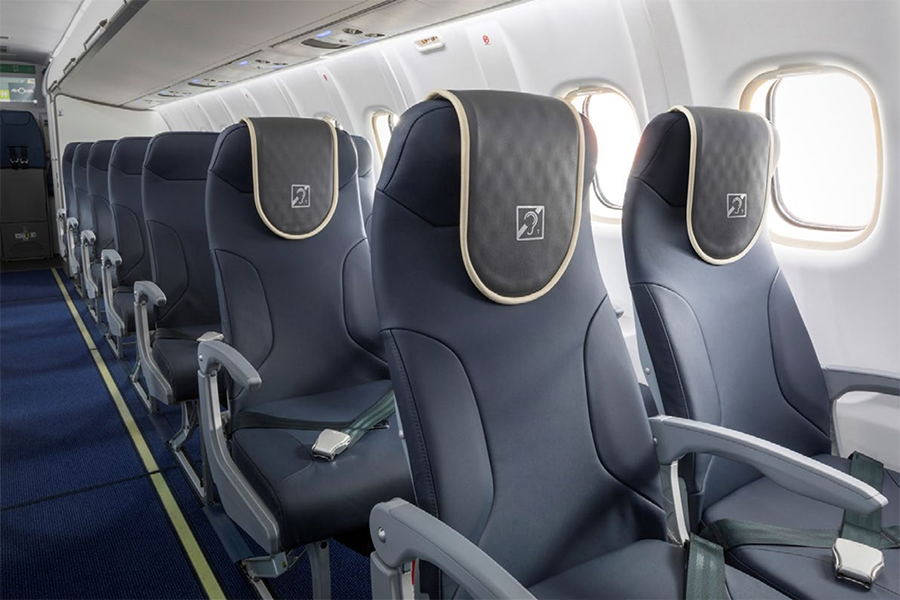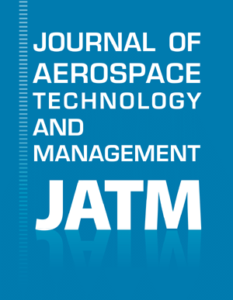Rosa Emilia Moraes, Scientific Journalist at Linceu Editorial, São José dos Campos, SP, Brazil.
Mobility is a universal human right (UN General Assembly, 1948, art. 13). For most people, air travel is synonymous with adventure and new discoveries. However, for people with physical disabilities or the elderly, the experience can turn into a real nightmare. The difficulties begin well before boarding and, unfortunately, continue throughout the journey. Thus, even a tourist trip can become an uncomfortable experience, to the point that many potential passengers prefer to avoid it.
Airplane seats are notoriously cramped and uncomfortable, but for people with disabilities or the elderly, they can be unbearable. The lack of space makes it difficult to transfer from a wheelchair to the seat, and the seats themselves don’t offer the necessary support for long hours of flying.
Airplane toilets represent another major obstacle. Small and narrow, they are practically inaccessible for those who need assistance or additional space. The absence of adapted toilets on many aircraft is a clear demonstration of how the needs of these passengers are neglected.
It is urgent to change this situation. Investing in proper employee training for employees, improving infrastructure and adopting assistive technologies are essential steps to guarantee a dignified and safe travel experience for everyone. Accessibility must be a guaranteed right, not a privilege.
Therefore, there is a constant effort to improve the accessibility of aviation services for this specific public. While legislation increasingly evolves to mitigate discrimination against people with disabilities, airlines are also eagerly seeking to cover this market, as the comfort of their customers is a coveted differentiator.
With this in mind, researchers from major aerospace technology development centers in Brazil, the Aerospace Technology and Science Department (DCTA) and Embraer, one of the largest aircraft manufacturers in the world, joined knowledge to develop a study in two parts, published in the Journal of Aerospace Technology and Management (vol. 16, 2024), addressing accessibility in air travel and how to improve it.

Imagem: FILHO, MORAES and SOUZA (2024)..
Figure 1. The accessible cabin model includes features for the hearing impaired, such as the AudioBack system.
In the first part, entitled Definition of Needs and Requirements for an Accessible Cabin on Regional Aviation, the authors sought to define the needs of passengers with disabilities in air travel. Design Thinking (from Nascimento Filho et al. 2023), a methodology that focuses on user demands and brings together perspectives from all sectors involved in building solutions, was combined with a vast literature review to map demands and determine critical points in accessibility for passengers with reduced mobility and those with sensory disabilities.
Based on the experience described by these passengers, a list of needs was established, considering factors related to access to the aircraft and seats, individual controls, storage and availability of luggage and mobility equipment, such as wheelchairs and strollers for personal use, access and use of lavatories, circulation space in the cabin and entertainment offered on board.
Most of the literature analyzed showed that passenger complaints are more often related to the cabin layout, especially for those with physical disabilities. Thus, in the second part, Proposal of an Accessible Cabin Concept on Regional Aviation for Passengers with Disabilities, the data gathered in the first article is evaluated and converted into High-Level Requirements (HLR) to support the proposal for an accessible cabin model using technologies already offered on the market, classifying them according to the Technology Readiness Level (TRL) which assesses the maturity of the systems available by the time of the project, following the methodology developed by NASA (2016). Figures and AutoCAD projects illustrate the solutions presented to demonstrate the application of these systems.
The conclusion is that the aircraft industry’s state-of-the-art makes it possible to provide a more comfortable flight experience for passengers with sensory disabilities without significant cabin modifications. The article also covers solutions for these people through auditory signaling devices, braille indicators, captions and sign language interpretation for crew announcements and in-flight entertainment.
Through insights from user research and an updated review of current legislation, the study aims to contribute to the aircraft industry’s development of cabins that better adapt to the needs of passengers with disabilities. Thus, it will optimize the provision of passenger services, travel, and tourism and ensure everyone enjoys their universal right to mobility.
References
UN GENERAL ASSEMBLY. Universal declaration of human rights [online]. United Nations. 1948 [viewed 20 August 2024]. Available from: https://www.un.org/en/about-us/universal-declaration-of-human-rights
NASA – National Aeronautics and Space Administration. NASA systems engineering handbook [online]. NASA. 2016 [viewed 20 August 2024]. Available from: https://www.nasa.gov/reference/systems-engineering-handbook/
To read the articles, access
NASCIMENTO FILHO, S.R.O, SOUZA, J.B.G. and MORAES, A.O. Definition of Needs and Requirements for an Accessible Cabin on Regional Aviation. Journal of Aerospace Technology and Management [online]. 2024, vol. 16, e1424 [viewed 20 August 2024]. https://doi.org/10.1590/jatm.v16.1334. Available from: https://www.scielo.br/j/jatm/a/n8hBXBysg9w7x6FYLWQkqSh/
NASCIMENTO FILHO, S.R.O, SOUZA, J.B.G. and MORAES, A.O. Proposal of an accessible cabin concept on regional aviation for passengers with disabilities. Journal of Aerospace Technology and Management [online]. 2024, vol. 16, e1424 [viewed 20 August 2024]. https://doi.org/10.1590/jatm.v16.1334. Available from: https://www.scielo.br/j/jatm/a/n8hBXBysg9w7x6FYLWQkqSh/
External links
Journal of Aerospace Technology and Management – JATM : https://www.scielo.br/j/jatm
Journal of Aerospace Technology and Management: Site | Facebook | Twitter
Como citar este post [ISO 690/2010]:



















Recent Comments